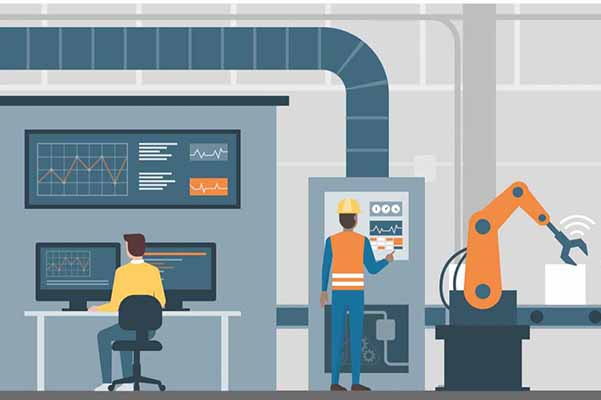As we reach the edge of the fourth industrial revolution, i.e Industry 4.0, the production processes of factories are intelligently networked. Thus, shaping factories to be dynamic and adaptable to the ever-altering expectation and demands from the industry. The digital and internet technologies have enabled a 360-degree development of completely automated production processes. Smart factories frequently aid factory managers by automatically collecting and analysing the data to make better-informed decisions thus optimizing production.
Additionally, smart factories decrypts and further analyses data to gain unique insights from data sets. These in turn, prove to be extremely instrumental in forecasting trends and events or in recommending and implementing smart manufacturing workflows. As manufacturing units adopt a more holistic approach towards increasing production rate optimization and data collection, integration of Industrial Internet of Things, paved the way forward for the creation of smart factories. This enables decentralized control of production procedures for smaller batch sizes and makes it possible to have a high number of product variants.
IIoT:
Being a smart factory enables the business to be more plugged into the IIoT, allowing them to understand, isolate and prioritize the predictable and repeatable components of processes. This permits a business to search for ways to recognize, segregate and focus on the anticipated and repeatable parts of cycles. It likewise helps in limiting margin time by continually observing the condition of the business systems and equipment to recognize or anticipate any issues. Thus, being networked efficiently has become a pivotal need for many manufacturing units.
In multiple ways data cables allow seamless transmission of technology to multiple and spread out spaces in a household/office. Hence it is pivotal to ensure that the chosen data cables can withstand the harsh environments in the factory. With such dynamic and rapid changes happening in the industry, the wires, data cables and connectors play a crucial role, creating a buoyant demand for a secured network, consistent cabling and connection concept.
Predictive maintenance:
Predictive maintenance can be utilized to foresee the shortcomings of any unit in a plant. Therefore, the role of a monitoring device that continuously monitors the working of cables is extremely important in a factory. It should be able to detect any decline in their performance and display the same with an easy-to-understand parameter. Cables are constantly subjected to high bending and flexing loads. In robotic applications, torsional forces also become an important factor. Although the cables are specially designed for this type of load, they are still considered wear parts. If the cables are not replaced when required, the system can fail completely, resulting in additional costs.
Typical error patterns of cables and wires are: wire breakage, damage to the sheath, damage to the insulation, geometric displacement in the cable structure and damage to shielding elements. These can cause the communication of data cables to be disturbed or interrupted. The application of monitoring devices can be extremely useful to understand if cables are exposed to constant ‘mechanical stress’, such as movement at high speed and acceleration, changing motion sequences, rotations with very high axial angles of rotation, short cycle times and small bending radii.
Operational Status:
Such data from various parts of a machine (motor, engine, sensors) is collected and a report on their operational status is provided to evaluate the system’s efficiency. This data is usually analysed using algorithms aimed at understanding any shortcomings in the equipment. By understanding this, the system’s efficiency can be boosted, or any upcoming problems can be detected and tackled at an early stage. Further to this, the data obtained from this can be shared via cloud, making it possible to access the plant globally.
Through such extensive evaluation of components, the probability of failure of cost-intensive applications or safety-critical infrastructures can be reduced. As a component of the Predictive maintenance approach, detailed information regarding the plants and its components are analysed between regular intervals. Through the adoption of such practices at factory floors, the plants’ cost and operational safety can be optimized and signal for any kind of maintenance can be given at the right time, maximising the operational efficiency level of the systems and avoiding loss of resources due to unplanned downtimes.
About the author:

Gary Bateman is the Managing Director of LAPP India.















